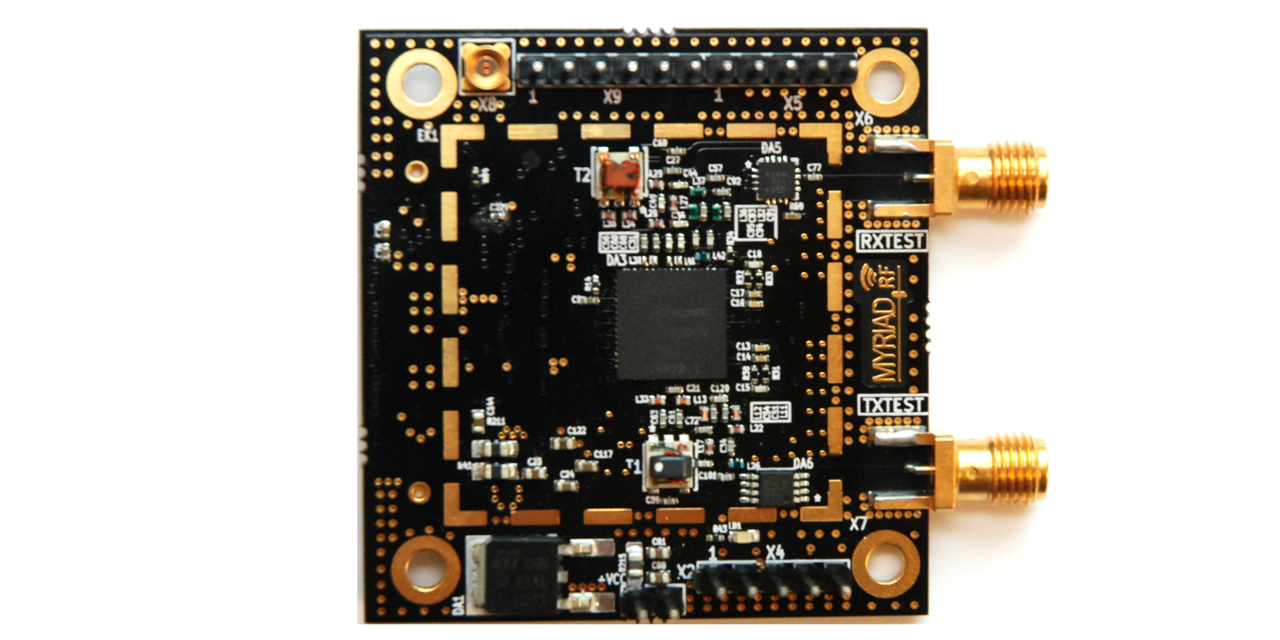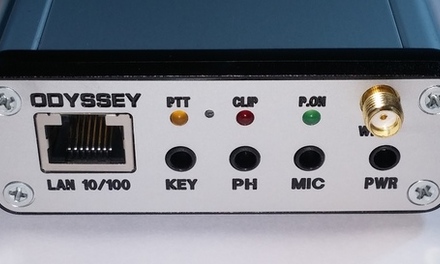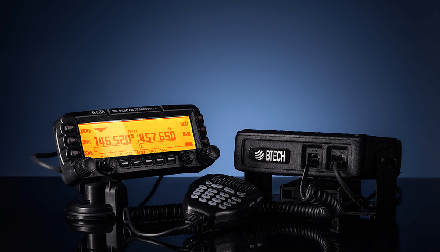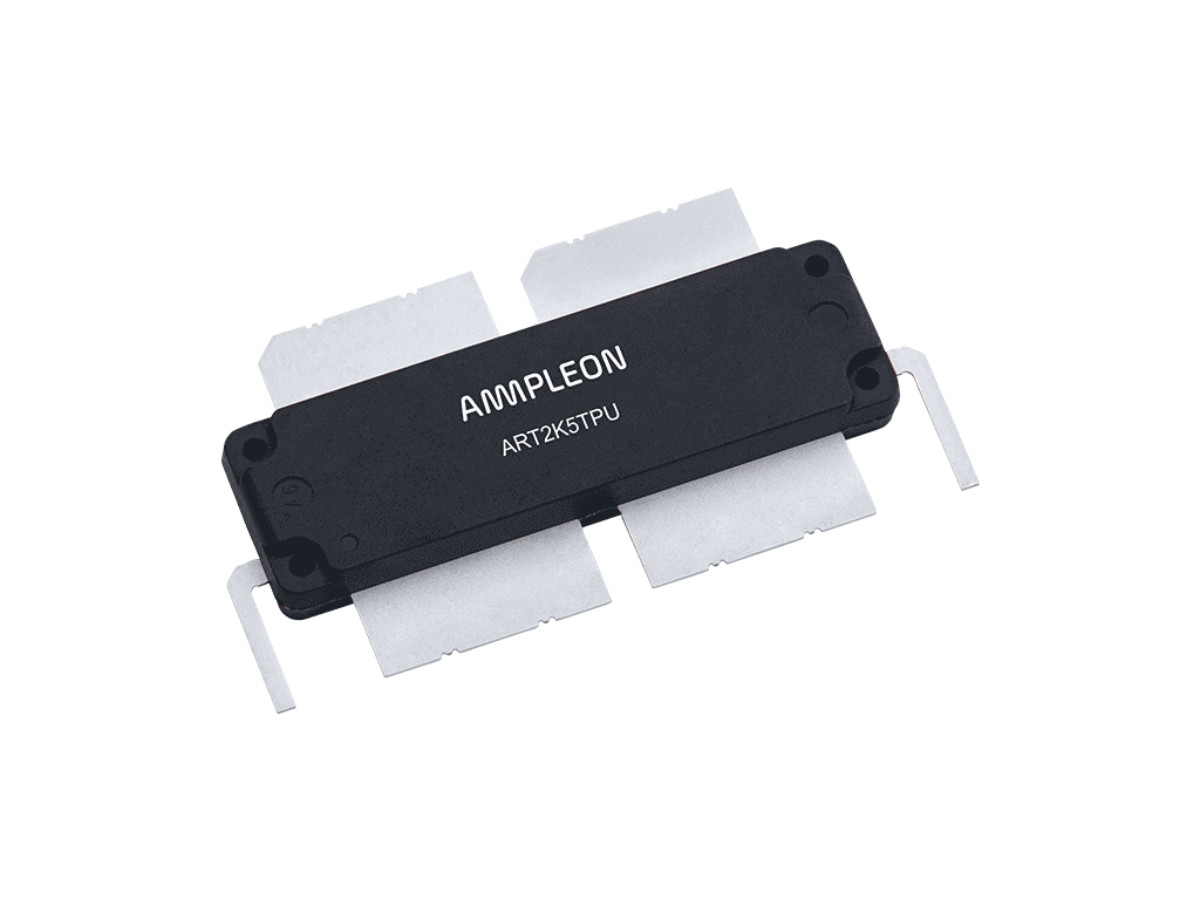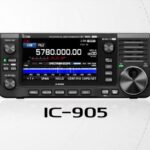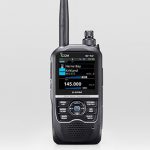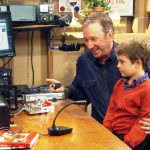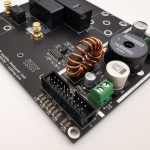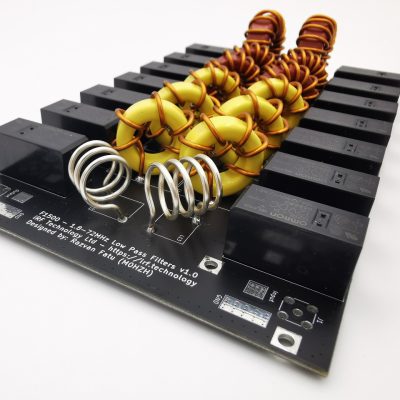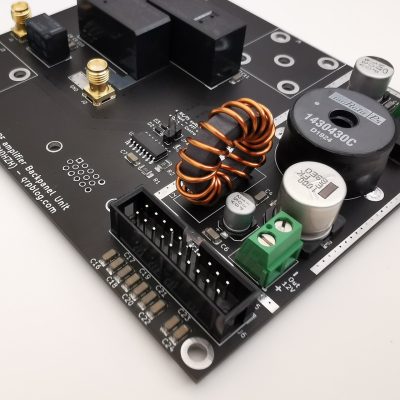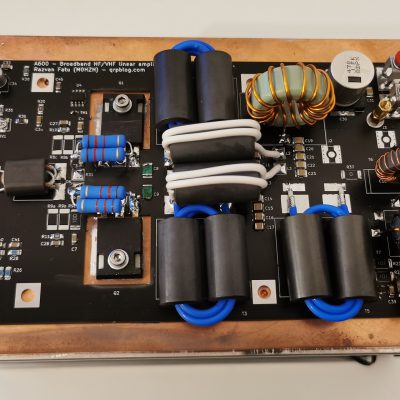Lime Microsystems is a rather new and fabless company specialised in multi-band multi-standard transciever IC’s; their only creation so far seems to be the LMS6002D, wich is a chip no bigger than the nail on your index finger but includes all the logic necessary for a configurable broadband transciever IC supporting all the modern 2G, 3G, 4G, CDMA, HSPA, WiMax or LTE standards: two ADC’s, two DAC’s, three low noise amplifiers, filters, mixers, gain control, the lot.
Unless you are a seriously antisocial tech-freak that won’t sound extremely fascinating, luckily the best part is still to come: they have worked together with their distributor Azio and have implemented the tiny creation in a board called the Myriad RF, wich is basically an Arduino shield that houses an equally versatile transciever, allowing a … myriad of RF-based projects to be prototyped around these two tiny boards; the Myriad RF does everything radio-related and the Arduino controls it and interfaces with the user and other pheripherals. Everything (software, PCB design etc) is open-source and it becomes a great learning tool, plus it brings advanced radio technology closer to hobbyists.
Of course, it is not just an Arduino shield, the manufacturer also offers a pre-designed solution to interface with an Altera FPGA in order to do some serious Software Defined Radio (SDR) work. The idea already generated a more advanced concept in the form of the bladeRF, wich is basically an USB 3.0 board that integrates the transciever, the FPGA plus some other required bits and pieces, wich is expected to land sometime in June 2013; it has already gathered almost US$200k in funding on Kickstarter, so it looks like it’s a serious business.
The only things I don’t like are that it works from about 260MHz to 3.8GHz (therefore it needs some hocus-pocus in order to be used in the amateur HF/VHF radio bands) and that it costs US$300, about 10 times more than an Arduino. Other than that, i will be following closely this little gadget, because it seems to be an important step for SDR in the amateur world.

